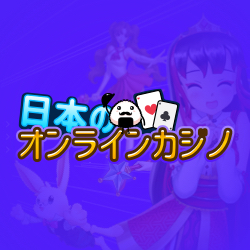MagnaCarta II Xbox 360 Review
The original MagnaCarta was very inventive and complex, but it’s this complexity that got in the way of offering a quality game and proved to be its major undoing. It was also the perfect example of innovation not always enriching the experience, as much of its fresh ideas either didn’t meet their potential or didn’t really manage to come together in a convincing fashion at all. In terms of complexity and innovation, MagnaCarta II is a much more restrained game, which proves to be a good thing on this particular occasion.
An aspect of MagnaCarta that wasn’t fresh was its story and the same largely applies to this new game. The lead character Juto (a likable type) has amnesia (I know what you’re thinking, but hold your horses), though knowing just who Juto was before his memories were lost to him grants the story plenty of intrigue, when the fairly typical surrounding story of war, with the usual character archetypes in the starring roles, perhaps wouldn’t have always managed to retain interest by itself.
Unlike a lot of RPGS, the story is fully voiced and its largely of a perfectly serviceable quality, too: complementing the narrative rather than transforming it into some unintentional comedy, with every spoken word as was so often the case with the original game.
MagnaCarta II largely follows the JRPG template closely, even though it actually hails from Korea. There’s an abundance of fighting, treasure collecting and stat enhancing character growth. But with its emphasis on quests, it also bears similarities with western designed RPGS. Sadly, these quests are largely simplistic and flimsy in nature and not half as interesting as the narrative and underlying mechanics that makes up the core of the game, but still worth playing to earn yourself some handy bonuses.
The combat system in MagnaCarta II is a much more standard take on fighting than its predecessor, but still not without a hint of invention implemented. It’s completely real time, but not quite the simple button masher that many will imagine it to be.
You can build a party of up to three characters, but are only ever in direct control of one at a time. The others are commanded by hit and miss AI, with the most obvious issue being the fact that healers sometimes refuse to heal you, even when your health drops to dangerously low levels. Tweaking their AI settings seems to make little real difference to their overall behaviour. So much for teamwork.
Thankfully in regards to combat, that’s the only problem that approaches seriousness. It works like this, each character has a stamina bar, which when completely filled will result in more damaging hits, taking them into overdrive. But as soon as you cease attacking when in this state, your character will enter overheat status, leaving them unable to attack or move for a set amount of time. If the character becomes overheated through using a skill, it’s possible to chain attacks with a team-mate by switching to them and transferring the overdrive status to them, which will result in subsequent attacks being even more damaging.
Do the same with this second character and a chain break will be executed, emptying the stamina bars of both characters involved in the chain, allowing you to start the process anew, though if you fail you have the dangerous situation on your hands of two overheated characters, which grants fights a certain level of risk. Even though some of the characters more damaging skills consist of lengthy animations that can’t be skipped and the camera can be problematic, it nonetheless all results in satisfying and reasonably strategic encounters.
To employ skills, you must expend a certain level of kan. Kan is earned in various ways, for physically reliant characters you’ll simply gain it through standard attacks, but for mages it works a little differently. They’re able to gain kan through attacking their enemies too, but aren’t able to store it for later use, but there’s also environment kan around each area, which mages can utilize, though unlike regular kan it never disappears until you leave the area.
Introduced much later in the game are co-op attacks, which unsurprisingly are some of the heaviest hitting and fanciest looking attacks in your arsenal. To pull these off, each character involved must first build up a certain level of kan and perform a chain with one another, then when prompted to do so you press a directional button, chaos then ensues.
Obviously, with it being an RPG and all, every felled enemy will win you the compulsion of experience to level up you party. The levelling up process, not only gives you a stats raise, but also skill points, of which can be spent to simply enhance your attributes, learn new or improve existing skills. Each character have two fighting styles each that can be changed between by changing their weapon type. These styles all have their own skill tree, but unless you have a hunger for level grinding you’ll only amass enough SP through a single play through to only max out one for each character.
An additional layer of character tailoring is possible with the enhancement system. Each weapon has a number of slots, where stat enhancing kamonds are fitted. There are many kamonds to find and buy, which in turn means there’s plenty of choice and possible combinations of kamonds to really allow you to have an involvement in the abilities of a character.
Those that were able to get around the quirks of the original game could find themselves disappointed at the familiarity and simplicity of MagnaCarta II. For everyone else, this safer take on the RPG genre, whilst not without its own shortcomings, is going to be a substantially better game than its risk taking, but deeply flawed predecessor.







